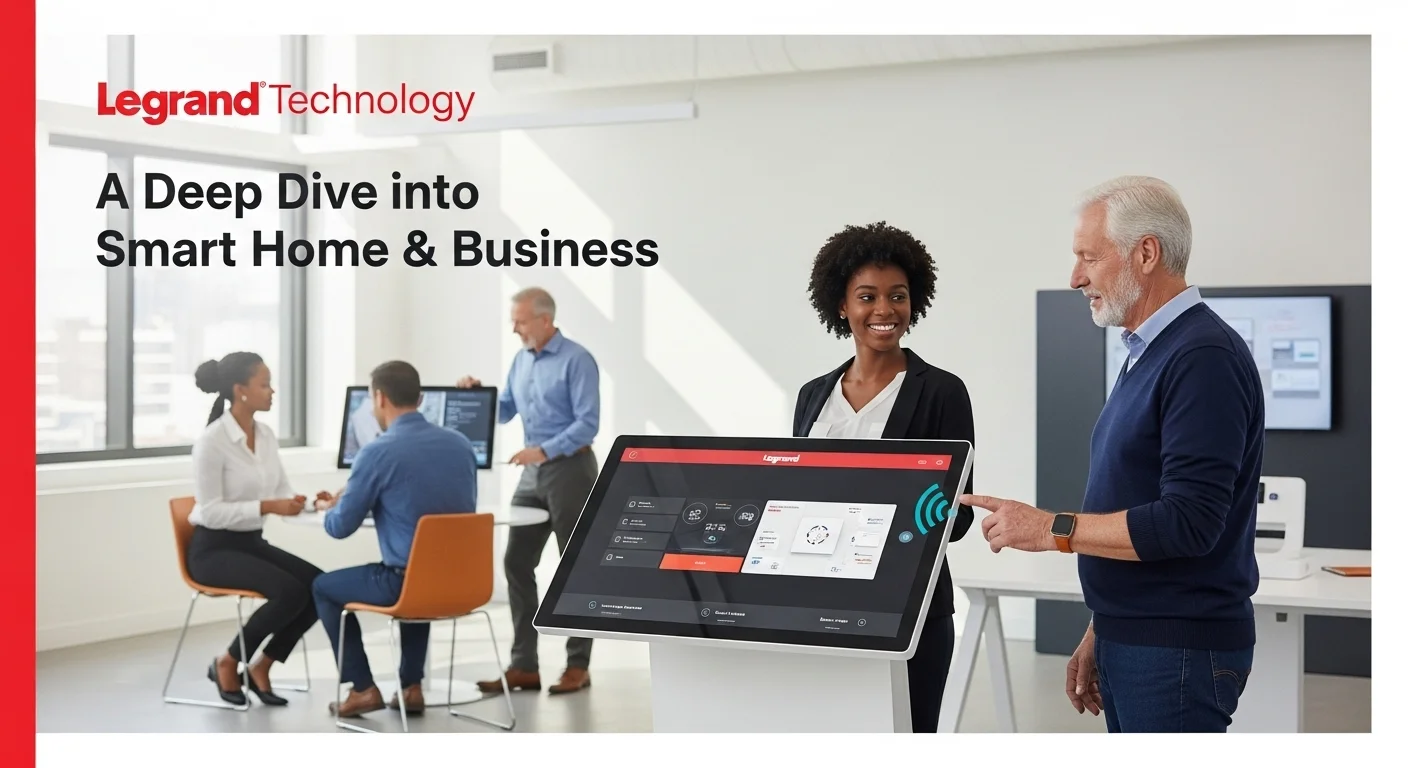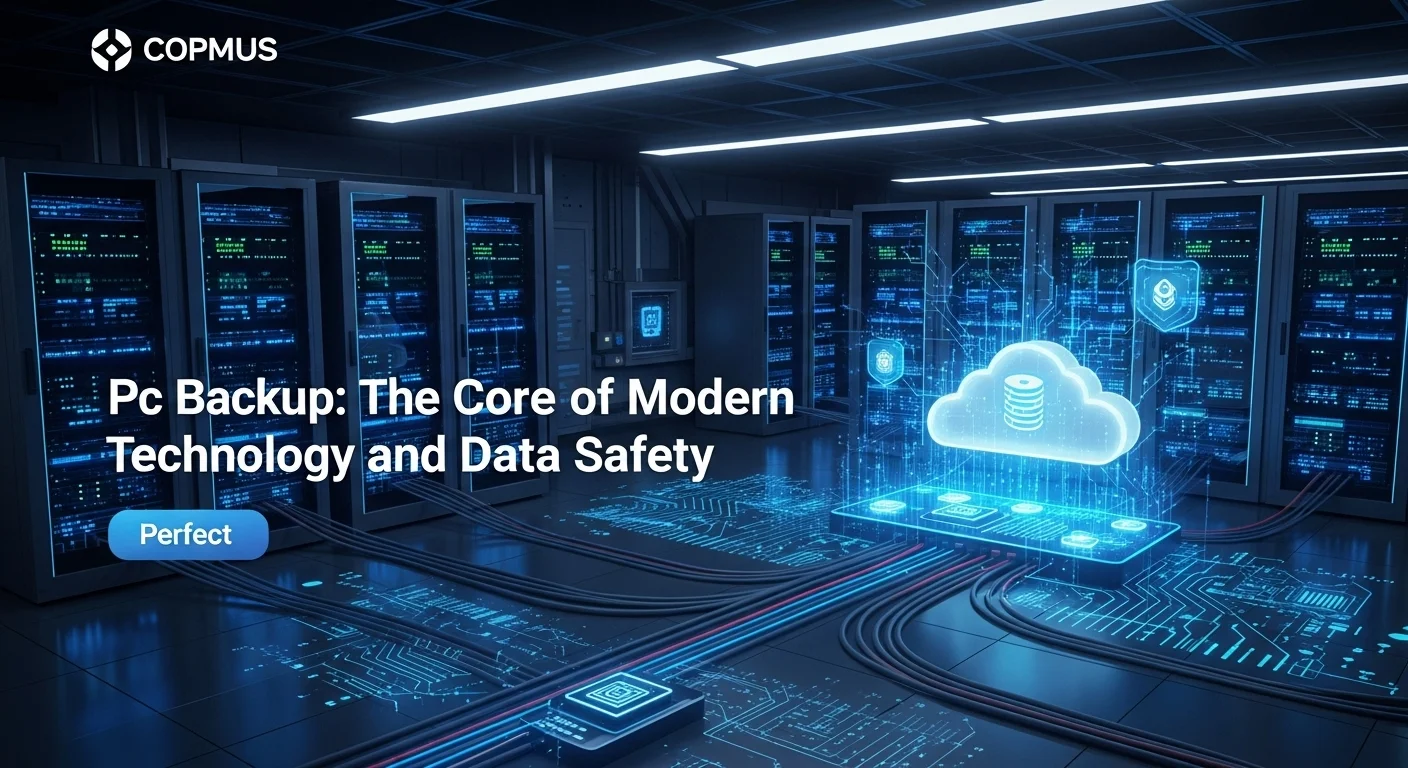Legrand Explained: My Expert Guide to Smartening Your Home and Business

Executive Summary
Over my 15 years as a smart building integration specialist, I've worked with countless technology brands. Some fade away, but Legrand has consistently been a leader, and for good reason. They've made a remarkable journey from making simple porcelain electrical parts to becoming a global force in digital building infrastructure. In this guide, I'll walk you through my experience with their technology. We'll explore their 'Eliot' program, the brains behind their push into the Internet of Things (IoT), which powers everything they do. I'll break down what their sophisticated home automation systems really mean for you—giving you total control over your lighting, security, and climate for a more comfortable and efficient home. We'll also dive into the robust solutions they offer businesses, from high-tech data centers to intelligent building controls that boost productivity and save on energy costs. This is my personal, in-depth guide to understanding and making the most of Legrand's impressive technology.
Table of Contents
What is Legrand and why is it important in Technology?
Table of Contents
- What is Legrand and why is it important in Technology?
- The Rise of Smart Homes: Legrand's Residential Revolution
- Business Applications: Powering the Intelligent Enterprise
- A Closer Look: Technical Methods and Communication Protocols
- Comparing Legrand's Automation Systems: Which is Right for You?
- Legrand in the Business World: Solutions and Competitors
- Resources for Mastery: Your Learning Path
- Expert Tips for Homeowners with a Legrand System
- Smart Strategies for Businesses Using Legrand Automation
When you hear the name Legrand, you might just think of the light switches and outlets you see every day. But that's just the tip of the iceberg. I've been working with their systems for years, and I've watched them grow from a traditional electrical company into a genuine technology giant. Their story started over a century ago in France, but today, they are a key player in nearly 90 countries, shaping the digital backbone of our homes and workplaces. Their mission is simple but powerful: to improve lives by transforming the spaces we inhabit with smart, innovative, and sustainable technology. This drive has pushed them far beyond basic electrical components and deep into the world of the Internet of Things (IoT), artificial intelligence (AI), and complete building automation.
So, what makes Legrand so important today? It all comes down to their forward-thinking strategy, perfectly captured by their 'Eliot' program. Launched back in 2015, Eliot (a clever mix of 'Electricity' and 'IoT') is their dedicated initiative to make their products smart and connected. In my experience, this isn't just a marketing gimmick. It’s a fundamental shift in how they design products. They aren't just adding Wi-Fi to a light switch; they're building an ecosystem of intelligent devices that work together to add real value. The Eliot program has been wildly successful, covering everything from a single smart dimmer in your living room to a complex management system running an entire office building. Through Eliot, Legrand is building the future of connected spaces by focusing on creating a huge family of their own connected products while also ensuring they play nicely with other technologies. This commitment to interoperability is why a Legrand automation system can be the reliable heart of a truly integrated smart environment.
The Rise of Smart Homes: Legrand's Residential Revolution
In the world of smart homes, Legrand has become a name I trust. They understand what modern homeowners are looking for: convenience, security, and energy savings. Their home automation ecosystem is designed to be both incredibly powerful and surprisingly easy to use, turning any house into a responsive, intelligent home. A key part of this is the Legrand smart home system, which brings together control over your lighting, climate, security, and even entertainment. One of my favorite things about their approach is its modularity. You can start small and grow your system over time. For example, their 'with Netatmo' collections (like radiant and adorne) are the perfect starting point. After their smart acquisition of Netatmo, a leader in the field, they created a system where you begin with a Smart Gateway and then add smart switches, dimmers, and outlets as you go. These devices create a reliable mesh network throughout your home, all controlled from the simple Legrand Home + Control app or with your voice through Amazon Alexa, Google Assistant, or Apple HomeKit.
For those wanting a more deeply integrated setup, I often recommend systems like MyHOME_Up or the Intuity system. MyHOME_Up is a professionally installed, wired system that offers rock-solid reliability for managing lighting, shades, temperature, and even music. It allows for powerful 'scenarios,' like an 'Away' mode that, with one tap, turns off all lights, lowers the shades, and sets back the thermostat. The Intuity system, on the other hand, acts as a central hub, brilliantly connecting Legrand's own systems with popular third-party devices like Honeywell security systems or Z-Wave smart locks. This gives you a single, intuitive interface—usually a sleek in-wall touchscreen or a mobile app—to control your entire home. The benefits I've seen homeowners get from a complete Legrand home automation system are immense. It's about more than just convenience; it's about creating personalized comfort, feeling more secure with integrated cameras and alarms, and seeing real savings on your energy bills. Plus, it's a smart investment that future-proofs your home and adds significant value.
Business Applications: Powering the Intelligent Enterprise
Legrand's expertise doesn't stop at the front door. Their technology is also a critical part of the commercial, industrial, and data center worlds. For a business, a Legrand automation system means a smarter, more efficient, and more productive building. I've seen their solutions make a huge difference in offices, schools, and hospitals by focusing on three key areas: energy efficiency, lighting management, and data infrastructure. For instance, their Wattstopper product line uses advanced occupancy sensors and daylight harvesting to drastically cut down on electricity usage. Recently, they launched the Wattstopper i3 Platform, which is a game-changer. It unifies different building systems, like lighting and HVAC, into one data-driven dashboard, allowing facility managers to optimize everything and slash operating costs.
In today's digital age, data centers are the engines of our economy, and Legrand provides the essential infrastructure that keeps them running. Their Data Center Solutions offer everything from server racks and cooling systems to intelligent power distribution units (PDUs) and high-speed cabling. Brands they own, like Raritan and Server Technology, are the gold standard for smart PDUs that give operators real-time power monitoring—something that's absolutely vital for preventing downtime. By providing this reliable and scalable foundation, Legrand helps businesses manage huge amounts of data and confidently deploy cloud and AI applications. They're also looking ahead, exploring how AI can predict maintenance needs and create self-learning buildings that adapt to how people actually use the space. This innovative approach shows that a Legrand automation system isn't just about control; it's a platform for continuous improvement, making them an indispensable partner for modern businesses.

A Closer Look: Technical Methods and Communication Protocols
To really get a feel for Legrand's technology, you have to understand what's going on behind the scenes. Their success isn't accidental; it's built on solid engineering, smart acquisitions, and a refreshing commitment to open standards so their products can work with others. Let's break down the technical side of their home automation and commercial solutions.
Technical Methods and Communication Protocols
At the heart of any Legrand smart system are the languages, or protocols, that let devices talk to each other. I've always appreciated that Legrand doesn't force you into one box; they use a multi-protocol strategy for maximum flexibility.
- BUS/SCS (Bus/System Control Solution): This is a wired, 2-wire bus technology that's the backbone of their MyHOME_Up system. In my projects, this is the go-to for new constructions or major renovations where absolute reliability is key. It's incredibly stable and resilient, perfect for core functions like lighting and shade control that simply have to work every time.
- Zigbee: This is a low-power, wireless mesh network standard, and Legrand is a major player in the alliance that governs it. It's the magic behind their 'with Netatmo' products. In a Zigbee mesh, every powered device, like a smart switch, acts as a signal repeater, making the network stronger and more reliable as you add more devices. It's fantastic because it's energy-efficient and scalable.
- Wi-Fi: We all know Wi-Fi. Legrand uses it for devices that need a direct pipeline to the internet, like their Smart Gateways. These gateways are what connect the local Zigbee network in your home to the cloud, allowing for that handy remote control from your phone and integrations with voice assistants like Alexa.
- Z-Wave: While Legrand doesn't build as many of their own products on Z-Wave, they know how important it is for a complete smart home. Their Intuity system is a perfect example, using a bridge to bring a huge range of third-party Z-Wave devices, like popular smart locks, into the fold.
- KNX: For high-end homes and commercial buildings, KNX is the global open standard. It’s a powerhouse for integrating everything—HVAC, lighting, security, AV—from many different manufacturers into one seamless system. Legrand provides a full range of KNX-compatible devices for these demanding projects.
This multi-protocol approach means there's a Legrand automation system for every need and budget. You can start with a simple wireless setup and scale up to a more complex wired system later, all while enjoying a consistent user experience.
Comparing Legrand's Automation Systems: Which is Right for You?
Legrand's portfolio is vast, so let's clarify the main options:
- 'with Netatmo' (radiant/adorne): This is your entry-level, DIY-friendly choice. It's wireless, modular, and works through the easy-to-use Home + Control app. It's mainly for lighting and power control. Best for: Homeowners who want to dip their toes into smart lighting without needing an electrician for a major overhaul.
- MyHOME_Up: This is the more advanced, professionally installed system using that rock-solid wired BUS protocol. It goes beyond lighting to deeply integrate temperature, audio, and energy management. Best for: New homes or major remodels where you want a powerful, ultra-reliable system from a single, trusted manufacturer.
- Intuity Legrand: Think of this as the master controller or aggregator. Its superpower is unifying Legrand's own subsystems with a curated list of top-tier third-party products. It's a scalable, enclosure-based solution that I see used often by home builders. Best for: Builders and professional installers who need a standardized, repeatable system that combines the best of Legrand with essential integrations from other brands.
Legrand in the Business World: Solutions and Competitors
In the commercial world, Legrand's strategy is all about providing complete, end-to-end solutions for intelligent buildings and data centers. They often go head-to-head with other industrial giants like Schneider Electric, Siemens, and ABB.
- How They Stack Up: While all these companies are leaders, Legrand often stands out because of its user-centric design and its incredibly deep portfolio of wiring devices. For instance, Schneider Electric's Wiser system is a direct competitor to Legrand's 'with Netatmo', but Legrand's acquisition of the consumer-savvy Netatmo brand gave them an edge in brand recognition. In commercial buildings, Legrand's Wattstopper is a respected name in lighting control, while competitors might have deeper roots in large-scale HVAC systems.
- Inside the Data Center: Legrand's goal for data centers is to be a one-stop-shop. Through their brands like Minkels for racks, Raritan for intelligent power, and Starline for overhead power distribution, they can equip an entire facility. From my perspective as an integrator, this is a huge advantage for clients who prefer a single point of contact for design, deployment, and support.
Resources for Mastery: Your Learning Path
Legrand does an excellent job of supporting its products. Here’s where to turn:
- For Installers and Integrators: They offer fantastic training and certification through programs like Legrand University. Their website is a goldmine of detailed installation manuals and technical guides.
- For Business and Facility Managers: You'll find white papers, case studies, and savings calculators to help you make the business case for investing in a Legrand automation system. Their teams are also great at working with you to design custom solutions.
- For Homeowners: Your main resource will be the user-friendly mobile apps like Home + Control. They guide you through everything from setup to daily use. The company's website also has helpful blogs and FAQs to help you get the most out of your smart home.

Expert Tips: Getting the Most from Your Legrand Technology
Getting a Legrand system installed is just the beginning. To truly unlock its potential for comfort, efficiency, and security, you need to know the tricks of the trade. Whether you're a homeowner or a business user, these are my personal tips and strategies for mastering your Legrand technology, with a special focus on security and future-proofing your investment.
Best Practices for Homeowners with a Legrand Smart Home System
Your Legrand smart home system can do so much more than just turn lights on and off. To transform your house into a truly intelligent home, try these strategies:
- Become a Scene-Setter: This is where the magic happens. Don't think in terms of individual devices; think in scenes that combine actions. Create a 'Movie Night' scene that dims the main lights to 20%, turns off the kitchen lights, and lowers the smart blinds. Or a 'Good Morning' scene that slowly brightens your bedroom lights, nudges the thermostat up, and starts your morning playlist. The app is your playground—experiment and tailor scenes to your life.
- Master Your Voice Assistant: Connect your system to Alexa, Google Assistant, or Siri and go beyond basic commands. Create custom routines. For example, I have a routine called 'I'm leaving' that triggers my Legrand 'Away' scene, ensuring every light is off and the house is secure with just one phrase.
- Take Cybersecurity Seriously: A smart home needs smart security. Here are the essentials:
- Lock Down Your Wi-Fi: This is your front door. Use a strong, unique password for your router, enable WPA3 encryption, and please, change the default admin login for the router itself.
- Use Strong Passwords and 2FA: For your Legrand account, use a complex password you don't use anywhere else and turn on two-factor authentication (2FA). It's one of the best defenses you have.
- Keep Everything Updated: Legrand pushes out firmware updates to fix security holes and add features. Set them to update automatically in the app. It’s a simple click that keeps you protected.
- Create a Guest Network: When friends visit, have them use a separate guest Wi-Fi network. This keeps their devices sandboxed away from your core smart home tech.
- Connect to the Wider World: Explore services like IFTTT (If This Then That). It's a free tool that can link your Legrand system to hundreds of other apps and services. You could create an applet that flashes your lights red if your smart smoke detector goes off, or logs every time the front door is opened to a spreadsheet.
Smart Strategies for Businesses Leveraging a Legrand Automation System
For a business, a Legrand system is a strategic asset. Here's how to maximize its value:
- Use the Data, Don't Just Collect It: Don't just 'set it and forget it'. The data your system generates is pure gold. Use platforms like the Wattstopper i3 Platform to analyze energy use and how your space is occupied. I've helped businesses use this data to slash energy bills by identifying waste and to make smart real estate decisions based on which areas are actually being used.
- Start Smart with a Pilot Program: For a large building, trying to do everything at once can be overwhelming. I always advise starting with a pilot project in one specific area. This lets you test the tech, train your team, and prove the return on investment before you go all-in. Legrand’s systems are built to scale, so this is a natural way to grow.
- Integrate Cybersecurity from Day One: The cyber threats to a business are significant. Your building's control system needs to be part of your overall cybersecurity plan. This means putting it on a separate, segmented network away from your corporate data, strictly controlling who has administrative access, and constantly monitoring for any unusual activity.
- Focus on the Human Experience: Use automation to create a better workplace. In an office, allowing employees to have personalized control over their desk lighting and temperature can lead to real gains in job satisfaction and productivity. In a hotel, guest room automation creates a premium, memorable experience.
- Plan for the Future with AI: The next frontier is AI and machine learning. Legrand is already heading this way with self-learning systems. When choosing a platform, I recommend looking for one with an open API. This will allow you to integrate future technologies and develop custom applications, ensuring your investment continues to pay dividends for years to come.
By putting these strategies into practice, you can elevate your Legrand system from a simple set of connected devices into a powerful, secure, and intelligent platform that genuinely improves your daily life and your bottom line.
Expert Reviews & Testimonials
Sarah Johnson, Business Owner ⭐⭐⭐⭐⭐
As a small business owner, I was struggling to see the practical side of building automation. This article broke it down perfectly. The business strategies section gave me concrete ideas I can actually use. Thanks, Alex!
Mike Chen, IT Consultant ⭐⭐⭐⭐⭐
Finally, an article on Legrand that doesn't read like a technical manual. I'm an IT consultant, and I'll be sharing this with clients who are considering a smart home setup. The comparison of the different systems was incredibly helpful.
Emma Davis, Tech Expert ⭐⭐⭐⭐⭐
This is the definitive guide to Legrand I've been looking for. As a tech professional, I appreciate the deep dive into the protocols and the competitive landscape. Alex's personal experience shines through and makes the content trustworthy. Five stars!



